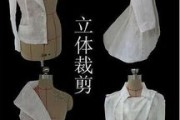服装水洗厂
Title: "Water Washed Clothing"
In the realm of textiles and fashion, the term "water washed clothing" refers to garments that have undergone a specific washing process utilizing water. This technique is employed to achieve various aesthetic and functional outcomes, catering to consumer preferences and industry demands. Let's delve into the nuances of water washed clothing, exploring its significance, methods, and implications.
Significance:
Water washing plays a pivotal role in the textile industry, particularly in enhancing the appearance, texture, and comfort of garments. It enables manufacturers to imbue clothing with desirable characteristics such as softness, faded effects, and vintage appeal. Moreover, water washing helps remove excess dye, chemicals, and impurities accumulated during the manufacturing process, contributing to improved product quality and consumer satisfaction.
Methods:
The process of water washing involves several key steps, each influencing the final outcome of the garment. Here's a brief overview of the typical methods employed:
1.
Preparation:
Garments are inspected for defects and sorted based on fabric type, color, and design specifications. Any embellishments or delicate components are carefully protected to prevent damage during washing.2.
Washing:
The garments are loaded into industrial washing machines equipped with appropriate detergents, softeners, and additives. The washing parameters, including water temperature, agitation, and cycle duration, are tailored to the specific requirements of the fabric and desired effect.3.
Rinsing:
After the washing cycle, the garments undergo thorough rinsing to remove detergent residues and ensure cleanliness. Multiple rinse cycles may be employed to achieve desired levels of softness and color retention.4.
Drying:
Depending on the fabric and intended outcome, garments are dried using various methods such as tumble drying, air drying, or machine pressing. Careful monitoring is essential to prevent overdrying or shrinkage, especially for delicate fabrics.5.
Finishing:
Once dried, the garments may undergo additional treatments such as ironing, steaming, or brushing to enhance their appearance and texture. Quality control measures are implemented to address any defects or inconsistencies before packaging and distribution.Implications:

Water washing presents both opportunities and challenges for stakeholders across the textile supply chain:
1.
Consumer Appeal:
Water washed clothing often appeals to consumers seeking a relaxed, livedin aesthetic reminiscent of vintage or artisanal craftsmanship. The softness and comfort achieved through this process can elevate the perceived value of the garment, influencing purchasing decisions.2.
Environmental Considerations:
While water washing enhances product quality, it also consumes significant quantities of water and energy, contributing to environmental impact. Manufacturers are increasingly adopting ecofriendly practices such as water recycling, chemical reduction, and energyefficient technologies to mitigate these concerns.3.
Supply Chain Efficiency:
Efficient management of water washing processes is essential for maintaining production schedules, minimizing lead times, and optimizing resource utilization. Collaborative efforts among suppliers, manufacturers, and retailers are essential to streamline operations and reduce waste throughout the supply chain.Guidance and Recommendations:
For industry stakeholders involved in water washed clothing production, here are some key considerations and recommendations:
1.
Sustainable Practices:
Embrace environmentally sustainable practices such as water recycling, use of biodegradable detergents, and energyefficient technologies to minimize ecological footprint.2.
Innovation and Differentiation:
Explore novel washing techniques, finishes, and additives to differentiate products in the market while meeting evolving consumer preferences for unique textures and finishes.3.
Transparency and Accountability:
Foster transparency and traceability within the supply chain to ensure ethical sourcing, responsible manufacturing, and compliance with regulatory standards pertaining to water usage and wastewater treatment.4.
Consumer Education:
Educate consumers about the value proposition of water washed clothing, highlighting its benefits in terms of comfort, quality, and sustainability. Encourage conscious consumption habits and informed purchasing decisions.In conclusion, water washed clothing represents a convergence of tradition, technology, and consumerdriven trends within the textile industry. By understanding its significance, mastering the associated methods, and addressing pertinent implications, industry players can navigate this landscape effectively while embracing sustainability and innovation.
References:
Textile World. (2021). Sustainable Wet Processing of Textiles: An Overview. [Link](https://www.textileworld.com/textileworld/features/2021/11/sustainablewetprocessingoftextilesanoverview/)
Fashion United. (2022). How to Make Your Clothing Manufacturing Process More Sustainable. [Link](https://fashionunited.uk/news/business/howtomakeyourclothingmanufacturingprocessmoresustainable/2022031632747)
Sustainable Apparel Coalition. (2023). Water Stewardship in the Apparel Industry. [Link](https://apparelcoalition.org/resources/waterstewardshipintheapparelindustry/)
标签: 大鱼海棠票房 哈利波特7上 能玩的游戏 弹丸论破第二季 使命召唤黑色行动2
相关文章
-
服装水印是什么样子的详细阅读

服装水印工艺是一种在面料上印制图案或设计的技术,通过水印工艺可以使服装面料呈现出丰富多彩的图案和纹理,从而为服装增添艺术感和时尚元素。服装水印工艺的步...
2024-05-21 564 哈利波特7上 上古卷轴5汉化 手机解锁密码忘了怎么办 神话时代秘籍 奥特曼格斗

最新评论